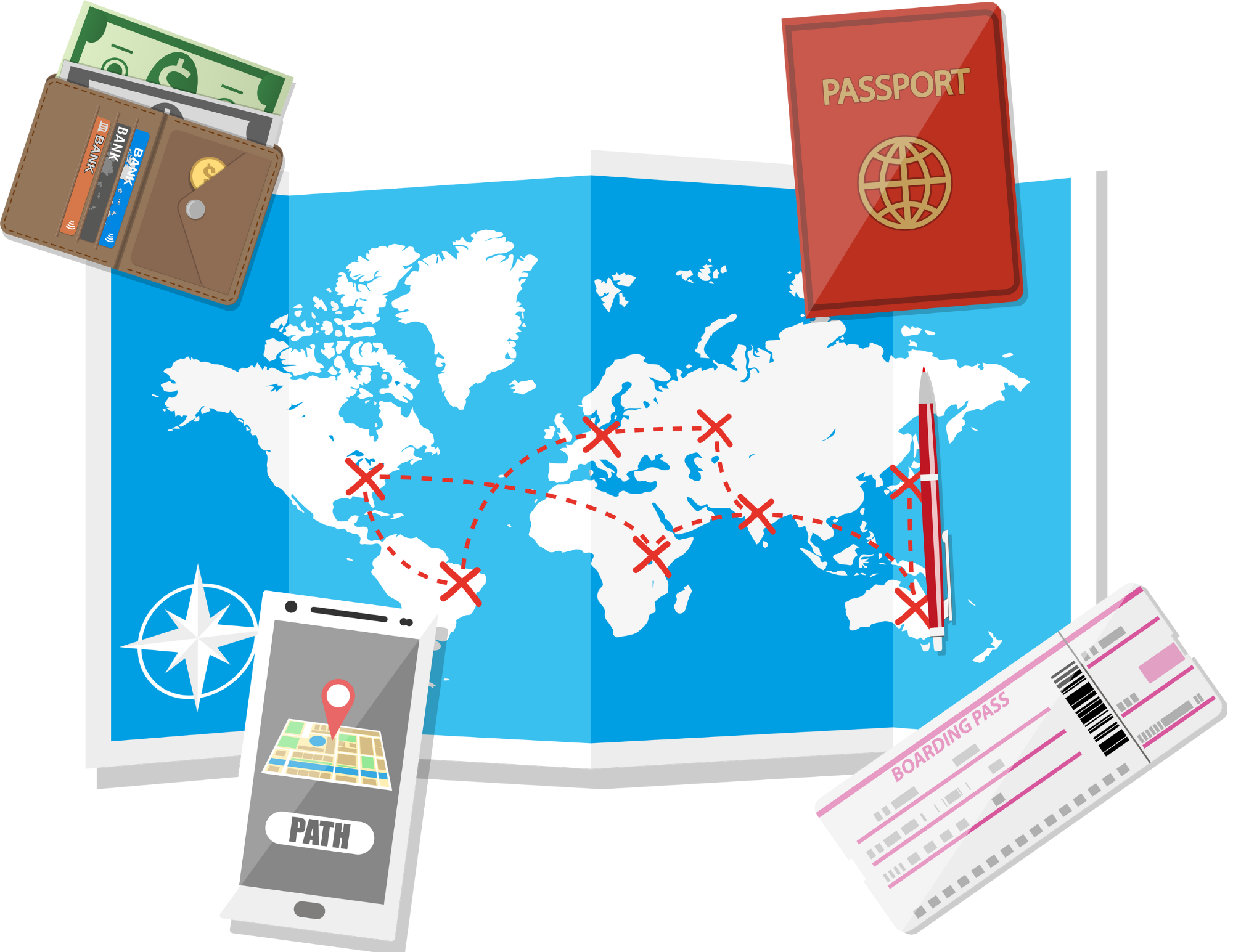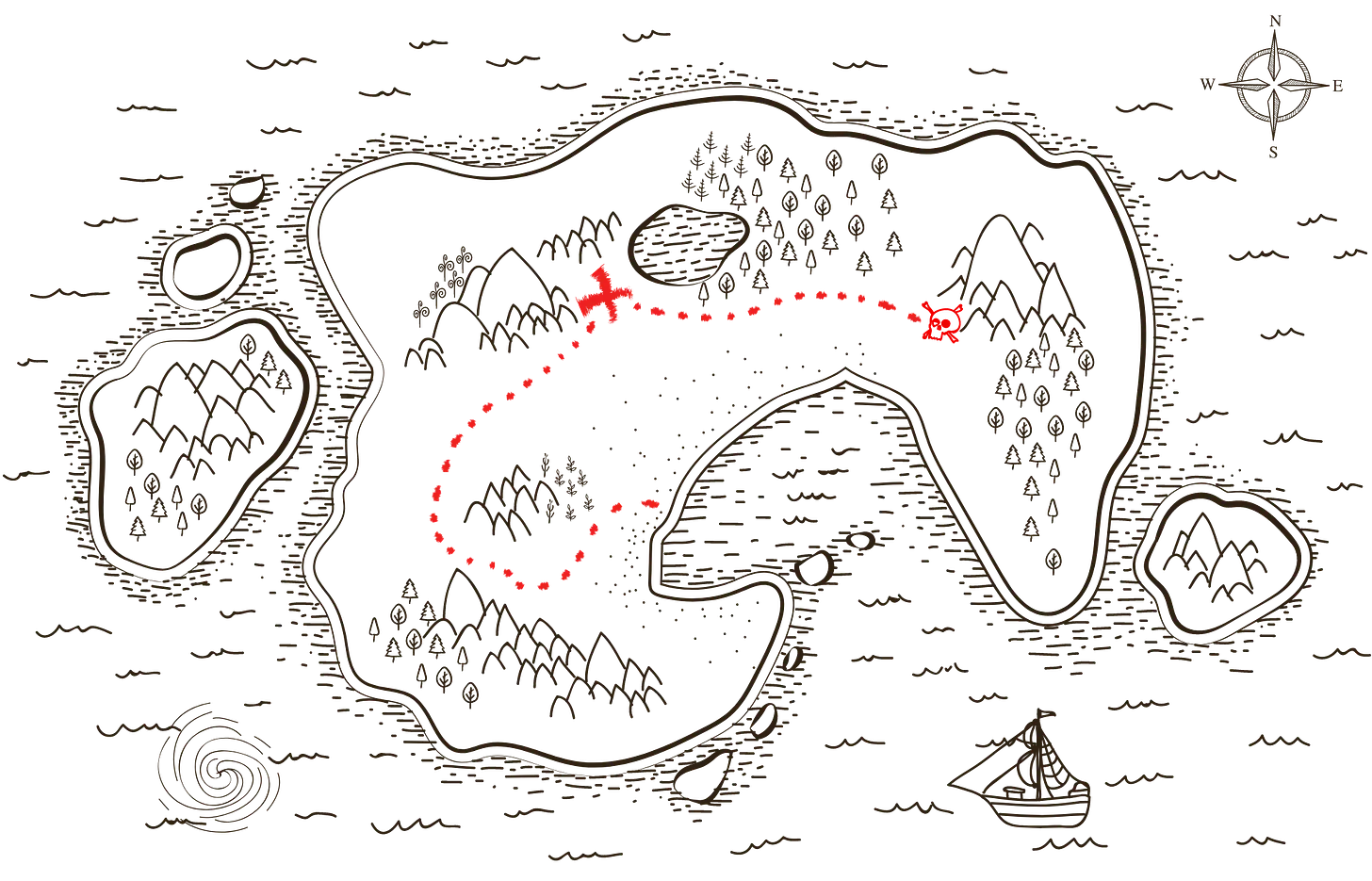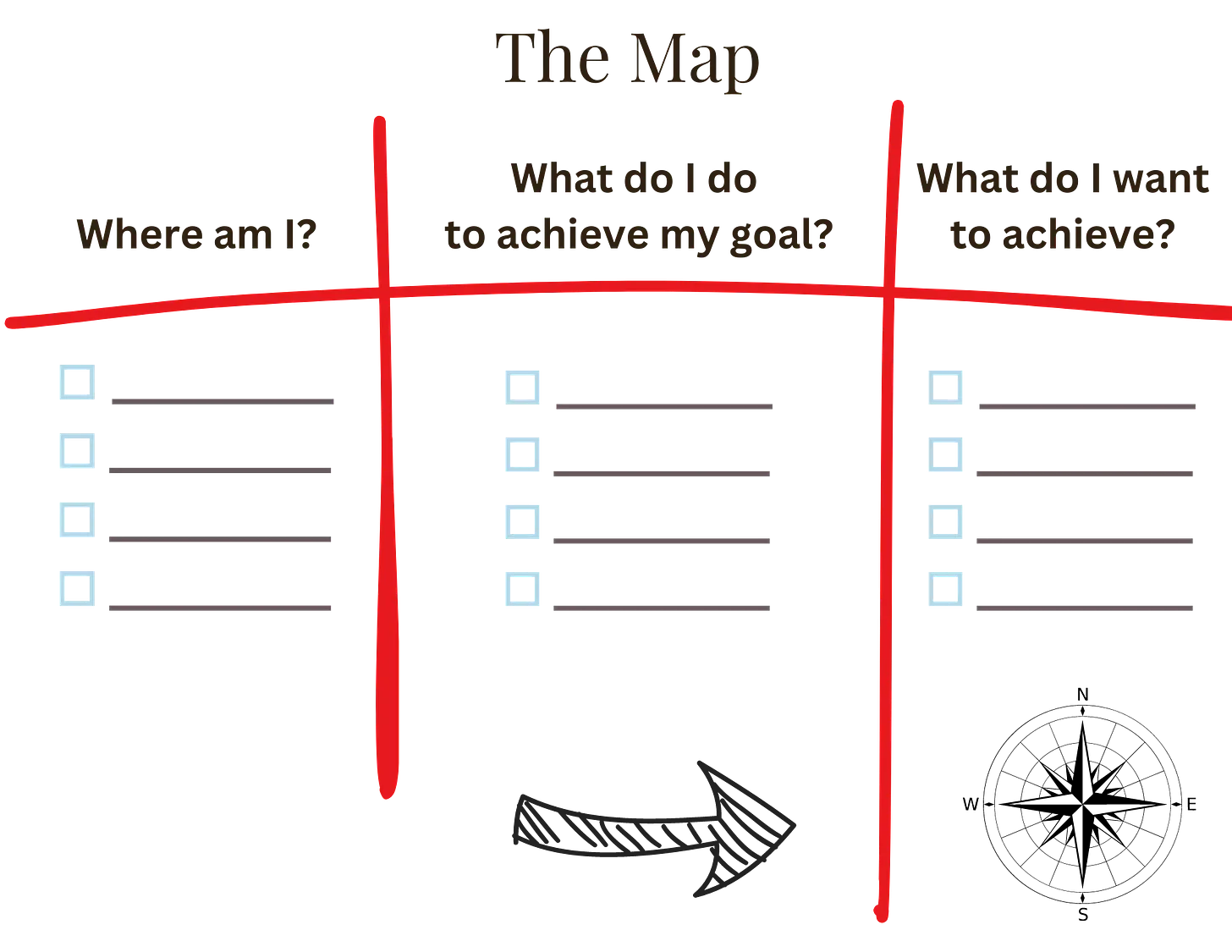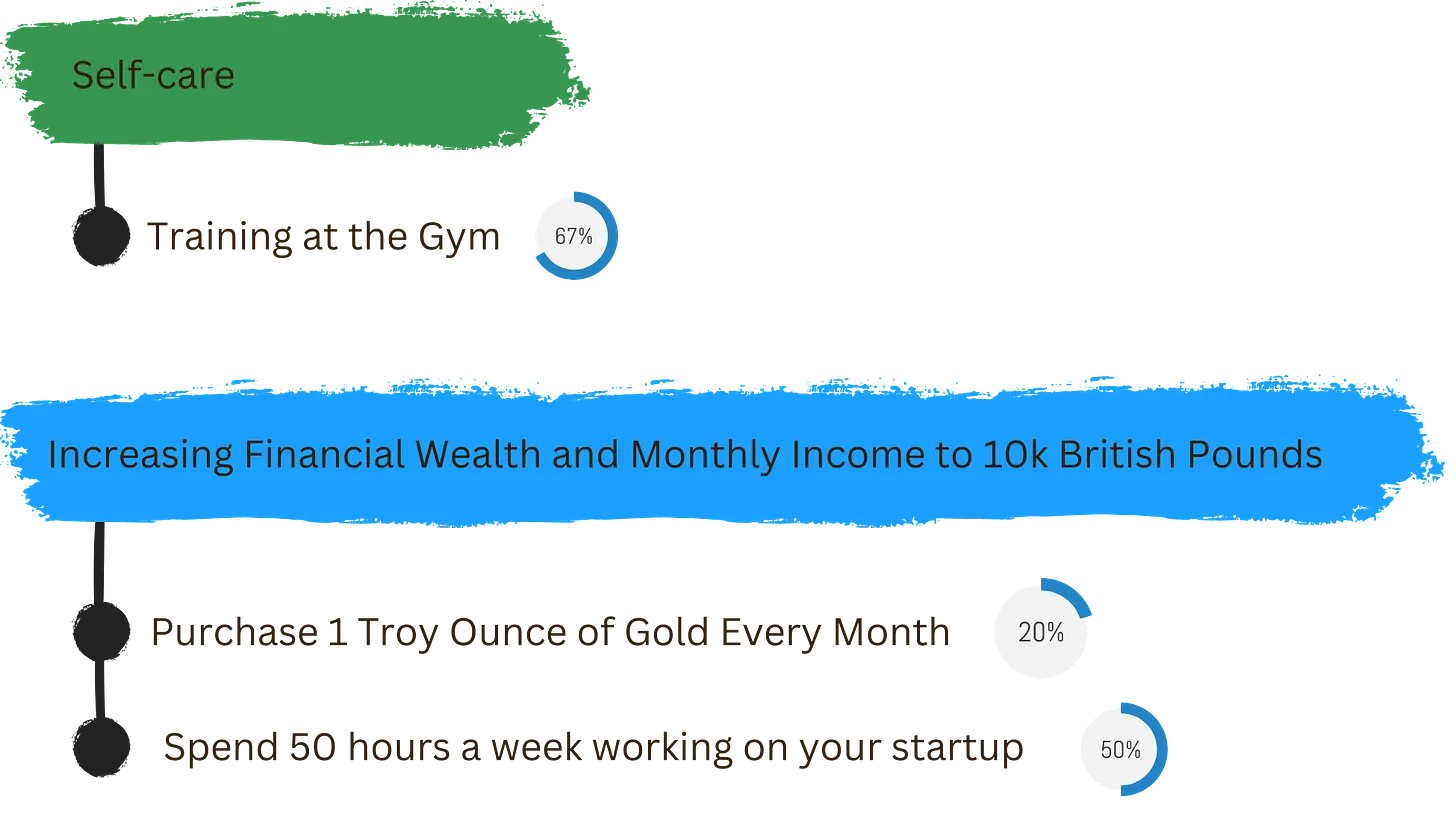
15 May How to Set Your Goals and Follow Them
May 15, 2024
The Trip
What do you do when you prepare for a trip? Usually, you make a plan – especially when others rely on you, like your kids. Here is an example of a plan: ensure you have the money needed for the entire trip; research hotels, the amenities they offer, and compare prices; book the one that best suits your needs and budget; arrange your flight tickets; check if your destination requires certain vaccines; rent a car if you plan to travel around the city you’re visiting, or look into transport cards; research the museums and concerts you would like to visit; investigate the possibility of purchasing an eSIM card for mobile coverage and internet connectivity. This list could continue, but you get the point. Even a small trip requires substantial preparation.

Now, imagine the opposite. You want to travel 10,000 miles away from home, but you only do half of the preparations I just mentioned. I guarantee that you’ll face certain issues that you’ll need to solve on the spot. You might succeed, but it will demand your energy, and the trip won’t be as enjoyable as it could be.
Alternatively, you might not succeed, and your journey will definitely be draining.
Business and Personal Goals
Now, let me pose another question. What do you do when preparing for your journey in life or when you want to achieve a business goal?
In both cases, without preparation, a system of goals, and a system to manage the entire process, you will yield random results.
Let’s return to the trip example. Even if you’ve planned the perfect trip, there’s no guarantee that you won’t encounter a storm throughout your entire vacation, or worse, experience a plane crash. However, the preparation increases your chances of achieving your desired outcome under the best possible circumstances.
The same goes for life and business. You can have the best business plan, the ideal team, perfect timing, and a fantastic idea. But accidents can occur, hyperinflation might strike, or any number of unforeseen events could happen. One thing is certain, though: having prepared in the best possible way gives you the highest possible chances for success compared to someone who didn’t prepare at all.
I’ve a Plan in Mind
Remember the following Chinese proverb:
The faintest ink is more powerful than the strongest memory.
The author is unknown, but the truth behind it is undeniable. You might have a plan or an optimal system in mind to achieve your business goal, but merely keeping it in your memory won’t be enough. You need to write it down, document it, and regularly review your progress and the tools you possess to achieve it.
The System
In this chapter, I’m going to present a piece of the system I follow. This system is quite simple, but it takes time and personal experience to refine it. So, from this perspective, consider it a gift, as it required my time and effort to perfect it.
The Map
In the pirate movies when chasing a treasure, what do you need? You need a ship, tools and a treasure map. Similar to your goals in life and business – you need a description of your inventory and a map.

I call this “The Map” and here is what it contains:
- What tools, knowledge, and skills do I possess? These could include a laptop, a high-tech phone, 100k British Pounds in the bank account, personal charisma, the ability to always dress well and make a good impression, proficient English language skills for effective conversations, along with knowledge in sales and business development.
- What are my ultimate goals in life? I will discuss this from the perspective of my personal life goals, as we often start businesses whose fruits, once harvested, will nurture our life goals, not the opposite. Example goals could include being healthy; earning a monthly income of 20k British Pounds; having a wife and kids; owning a nice house with a backyard, close to nature but easily accessible from the city; and the ability to travel.
- What actions am I currently taking to achieve my goals? Now that we know what tools we have and where the treasure lies, how do we get there? Here, we can categorise our actions into two sections:
- Personal. Here are a few examples:
- Sport – because sport is health.
- Paying attention to my dress code. In my home country, Bulgaria, there’s a saying: “They greet you by your clothes but see you off by your mind.” This essentially means that people’s first impression of you is based on your appearance, and their last impression is influenced by your behaviour and the conversation they had with you. Therefore, your choice of clothing, colours, and style matters.
- Environment. As motivational speaker Jim Rohn said: “You are the average of the five people you spend the most time with.”. There’s not much more to add here – the point is clear.
- Business. In this category, list all sources of income, investments, and businesses you’re working on. You can elaborate further by noting how much time you spend each day or week on each item, and what stage they’re in. For example, label a full-time job as “stable” and a startup as “in testing”, etc.”
- Personal. Here are a few examples:

The main purpose of The Map is to understand exactly where you are spending your time and effort. So, the next time you think of starting something new or someone proposes a new venture, you can quickly refer to The Map to see if the opportunity aligns with your goals. Also, it allows you to evaluate if you have the necessary resources and time to undertake it. Essentially, The Map provides you with clarity and focus.
You can sketch this map on a piece of paper and hang it on the wall in your office for easy visibility, or you can use a digital tool of your choosing.
OKR
Now that we have our ‘ship’, all tools prepared, and we know where the treasure is, should we track our progress as we’re sailing through the vast ocean, or simply go ahead and hope for the best?
My life experience has taught me the clear answer: If we don’t measure it, we can’t manage it.
As a visual individual who appreciates simplicity, I’ve experimented with various methods and I’ve found that OKRs (Objectives and Key Results) offer the simplest and most intuitive way to track the progress of your actions towards your goal.
What is OKRs?
OKRs, or Objectives and Key Results, is a goal-setting framework for defining and tracking objectives and their outcomes.
- Objectives: These are clearly defined goals that are intended to be achieved within a specific timeframe. Objectives should be aligned with the company’s vision and mission, and they must be ambitious, motivating, and actionable.
- Key Results: These are measurable values that demonstrate how effectively an objective has been achieved. Key results are typically quantifiable, time-bound, and challenging, but also realistic.
This framework is used by individuals, teams, and companies to create alignment and engagement around measurable goals. It promotes focus, transparency, and accountability.
The concept of OKRs has been popularised by tech companies like Google, LinkedIn, and Twitter (now known as X), but it has its roots in a management system called “Management by Objectives,” initially introduced by Peter Drucker.

How do we use OKRs?
Following the examples given in the chapter ‘The Map’, the objectives could be ‘Self-care’ and ‘Increasing Financial Wealth and Monthly Income to 10k British Pounds’.
The key results we add to the ‘Self-care’ objective should reflect specific actions we undertake. For instance, if we want to improve our health, an example of a key result could be ‘Training at the Gym’, with the target of five sessions per week.
The key results we add to the objective ‘Increasing Financial Wealth and Monthly Income to 10k British Pounds’ are again actions we take to achieve the objective. For instance, if we aim to increase our wealth, a key result could be ‘Purchase 1 Troy Ounce of Gold Every Month’.
To visualise the OKRs, you can use an Excel spreadsheet or an online OKR tool. Simply type ‘OKR tools’ into Google and choose the one that suits you best.
Calendar
Now that you have a map – a plan outlining what you want to achieve and how to do it – coupled with a tool to measure your progress, does it matter whether you start working on it tomorrow or in ten years?
For a moment, let’s pretend we don’t know the answer. Suppose a friend has a plan to build a house and starts tomorrow. Meanwhile, we also have the same plan and tools, but we dawdle, postponing the obvious actions like buying land or saving money for the foundation of our house. Ten years later, we’re still aimlessly wandering with no house to speak of, while our friend not only has one but is living there with his family.
I can assure you that procrastination accumulates and eventually manifests as a feeling of regret.
Now, let’s stop pretending and face the obvious – we need to start not just tomorrow but also need to know when and what steps to take, aligned with the plan we have, so we can measure our progress with the tools presented above.
A simple calendar will be good start. Take a moment to sit down, open a calendar for the year or years ahead, and note down specific actions and the dates by which these actions must be taken.
In my case, I use Google Calendar, but you can choose whatever tool you prefer.
Notebook
Imagine looking at all the tools I’ve mentioned above multiple times, every single day. I’m not a doctor, but my experience suggests that this could be a recipe for high-quality stress.
These three tools provide a general picture of where you’re headed, but on a day-to-day basis, they aren’t your main concern. After all, you have other obligations, like visiting family, taking care of your wife and children, going to the grocery store, and so on.
Therefore, we need a simplified version, which boils down to one simple question: What do I need to do today to achieve my larger goal?
This could be a small list of one or two tasks that may seem simple, but are precisely aligned with your long-term plan.

In this case, I use a simple notebook. You can use a paper notebook or a digital one, but essentially, it contains a list of the next 12 months (January, February, March, etc.), with each month having a brief list of major tasks that need to be completed.
Of course, there are things like meetings and obligations that can be added to your calendar, but the most important tasks are kept in your pocket notebook.
Guidances
Tasks
Having too many tasks every single day, which involves making multiple decisions in different directions, is burdensome. You’ll soon find out that this can lead to burnout and diminished cognitive abilities.
Try to reduce your daily tasks to a bare minimum – one or two business-related tasks a day is optimal. The same applies on a monthly basis – two or three major tasks per month is more than sufficient.
The ultimate goal is to have the energy and capacity to think and observe, to the point of finding the best solution to a problem. Then, once you are prepared, you can make the best possible decision considering the circumstances around you.
Simplicity doesn’t mean easy
Everything I mentioned in this article may seem painfully simple. Therefore, our minds might conclude that due to its simplicity, this methodology doesn’t require much energy or effort to be implemented and bring results.
This is a mental trap. Let me explain. A mind trap occurs when our brain convinces us of the validity of certain beliefs or feelings when, in fact, they are not true. This happens because our brain has evolved over thousands of years to make quick conclusions in critical situations for the sake of our survival. If we don’t pay attention to these rapid conclusions, we may be misled. “Simplicity is easy” is one these conclusions.
For more about mental traps, you can check out the book ‘Thinking, Fast And Slow’ by Daniel Kahneman – a nobel prize winner.
So, because it sounds easy, we tend to procrastinate.
Don’t!
Key Takeaways
- If you don’t have a plan, then there is no plan, and your chances of moving in the right direction to achieve your goals diminish.
- To achieve your goals, you need a simple yet effective system – similar to a watch – that guides you towards your business and life goals.
- Avoid overwhelming yourself with too many tasks and decisions. Take time to think and observe before you act.
